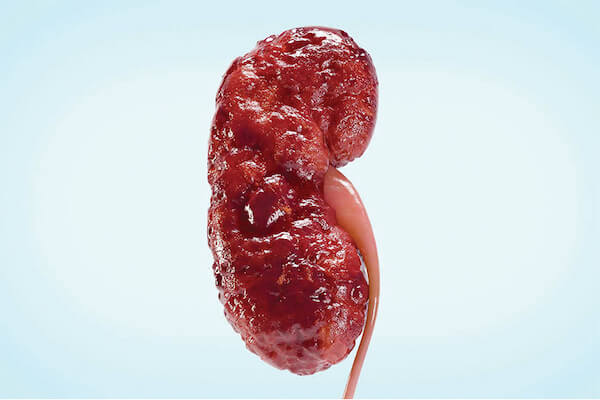INFLAMMATION + FIBROSIS
INFLAMMATION AND FIBROSIS ARE DAMAGING YOUR PATIENTS' KIDNEYS1,2
Inflammation and fibrosis are a major driver of CKD progression in patients with T2D. Triggered by MR overactivation, inflammation and fibrosis may cause irrevocable kidney damage.1-4
Thank you for visiting our site. The questions you'll see throughout are completely voluntary.
MR overactivation can trigger the production of proinflammatory and profibrotic proteins, which may lead to kidney damage1,2
Rajiv Agarwal, MD, takes us through how MR overactivation impacts inflammation and fibrosis and leads to CKD progression
Normal MR Function

MR Overactivation

Inflammation and fibrosis in the kidneys, triggered by MR overactivation, are a largely unaddressed driver that can lead to compromised filtration, albuminuria, and a decline in kidney function1-9
MR overactivation contributes to the risk of CV dysfunction1
Both preclinical and clinical trials provide evidence of the connection between MR overactivation and CV dysfunction. As CKD progresses, there is an increased chance that a patient with CKD and T2D might experience a CV event like myocardial infarction or stroke.1,10
Read more about how inflammation and fibrosis affect the kidneys on a cellular level.5

Cells within the glomerulus (a tuft of capillaries that remove waste from blood) proliferate and expand, resulting in mesangial matrix expansion. There is a strong link between this process and CKD progression.5

Thickening and scarring in and around the renal tubules can decrease renal function and increase pressure.5

The hardening and scarring of the glomerulus lead to an excessive loss of protein.5

Structural damage to the kidney impairs the organ’s functionality.5
In the kidney, inflammation and fibrosis can lead to tissue expansion, increased pressure within the vasculature and internal structure, and eventually scarring that makes effective filtration increasingly difficult.2
CKD: chronic kidney disease; CV: cardiovascular; MR: mineralocorticoid receptor; T2D: type 2 diabetes.
References:
- Tesch GH, et al. Front Pharmacol. 2017;8. doi:10.3389/fphar.2017.00313. Return to content
- Alicic RZ, et al. Clin J Am Soc Nephrol. 2017;12(12):2032–2045. Return to content
- Toth-Manikowski S, et al. J Diabetes Res. 2015;2015. doi:10.1155/2015/697010. Return to content
- Black LM, et al. J Histochem Cytochem. 2019;67(9):663–681. Return to content
- Thomas MC, et al. Nat Rev Dis Primers. 2015;1. doi:10.1038/nrdp.2015.18. Return to content
- Alicic RZ, et al. Adv Chronic Kidney Dis. 2018;25(2):181–191. Return to content
- Kidney Disease: Improving Global Outcomes (KDIGO) Diabetes Work Group. Kidney Int. 2020;98(4S):S1–S115. Return to content
- Cosentino F, et al; ESC Scientific Document Group. Eur Heart J. 2020;41(2):255–323. Return to content
- Tuttle KR, et al. Am J Kidney Dis. 2021;77(1):94–109. Return to content
- Amod A, et al; DEVOTE Study Group. Diabetes Ther. 2020;11(1):53–70. Return to content
